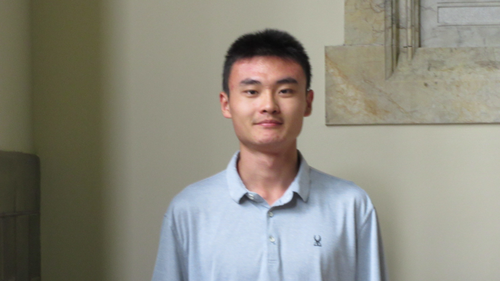
On April 10, Tianyu Yuan successfully defended the thesis “Spatial organization and dynamics of chromatin polymers in their native folding state” (advisor: Simon Mochrie).
Yuan explained, “We are only beginning to understand how DNA and its associated machineries function at the microscopic and quantitative levels. Studying DNA organization and dynamics in vivo therefore offers fundamental insights into the physical properties of functional DNA, enabling us to explore the relationship between DNA’s structure, dynamics, and biological functions. At Yale, my work focused on modeling the spatial architecture and dynamics of DNA influenced by an organizational mechanism known as DNA loop extrusion, which is conserved across the tree of life. We developed the conserved-current loop extrusion (CCLE) model, which successfully reproduces the spatial structures of both vertebrate and non-vertebrate organisms. Our model’s broad applicability also reinforces the universality of the loop extrusion mechanism across the tree of life. My research lays the groundwork for uncovering the molecular mechanisms underlying DNA loop extrusion and its critical role within the intricate network of DNA functions.”
Yuan will be a postdoc at Harvard Medical School in Ting Wu’s lab, using superresolution imaging techniques and modeling to probe DNA spatial organization and function.
Thesis Abstract: The spatial organization and dynamics of chromatin polymers are crucial physical properties for gaining a comprehensive understanding of genetic functions and the complex network of the DNA and its associated proteins. To model the native state of the chromatin folded by active loop extrusion, we develop a mean-field-like theory that self-consistently recapitulates the distribution of associated motor protein and simultaneously reproduces the chromatin spatial conformation measured by Hi-C contact map. We show that the chromatin loop extrusion is the primary mechanism that governs its organization in yeasts and vertebrates. We also develop a theoretical framework based on the Rouse-model polymer to study the dynamics of chromatin with loops. By conducting simulations, we show that the loop extrusion restricts chromatin mobility instead of enhancing it. Our Rouse-model looped polymer framework and simulation method can also be used to estimate first-passage times of chromatin self-contact reactions, which are important for gene regulation and additional chromosomal processes.